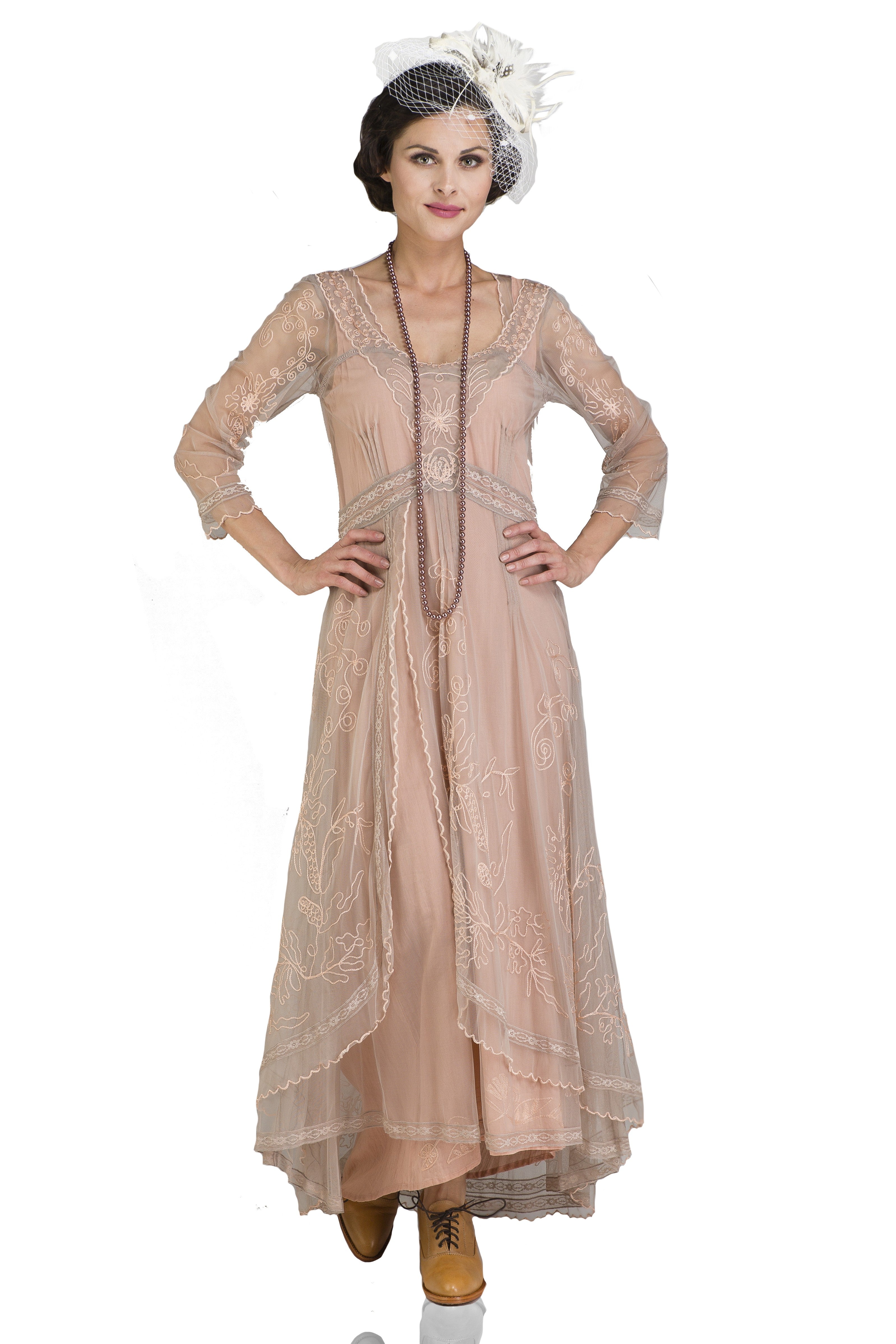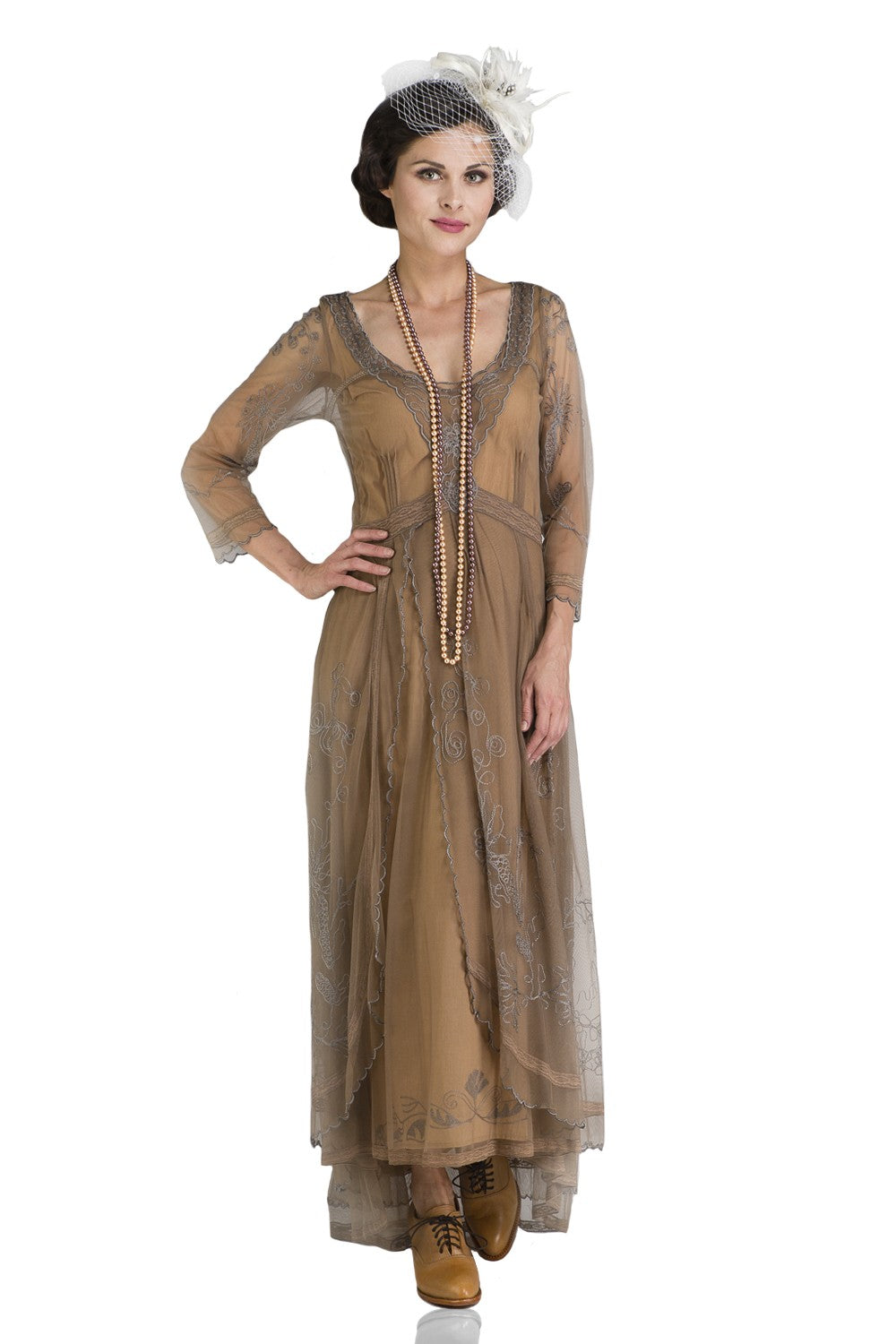Edwardian Era Fashion & The S-Shaped Silhouette
by Karen
Fashion is often an indicator of societal norms. One of the best ways to determine the cultural values of any era is to look at the way men and women dressed on a daily basis. Clothing trends have changed greatly over the past 500 years. One of the most drastic changes occurred at the beginning of the 1900s. The dawn of the new century brought with it newfound freedoms, progressive ideas, and a more exciting lifestyle. If there is any doubt that culture changed greatly during this decade, one must look only at the clothing worn by women at the time. As the Victorian Era fashion transitioned into the Edwardian Era fashion, women became more carefree. New beauty standards and ideals came to the forefront, giving women more options than ever before when it came to their clothing choices. Read on to learn about the popular fabrics, styles, and silhouettes that defined Edwardian Era fashion.
A Period of Change
During the Victorian Era, women were required to wear billowing gowns that featured dark colors, stiff corsets, and dark fabrics. Highly modest and somewhat somber, these restrictive looks were as much of a comment on societal norms as they were a fashion statement. During this highly conformist era, it was important for women to maintain a polished, statuesque, and somewhat helpless appearance when in public.
The start of the Edwardian Era in 1901 lead to a change in the world’s cultural landscape. Society was slowly becoming decidedly less conservative than it had in the previous decades, and these progressive ideals lead to subtle cultural shifts that were felt worldwide. It makes sense, then, that the way women dressed during the Edwardian Era differed greatly from the oppressive, restrictive clothing that was in vogue during most of the 19th century.
The History of the Edwardian Era
The Victorian Era was named after Queen Victoria, who ruled Great Britain from 1837 until her death in 1901. The young queen was one of history’s first fashion influencers. The Victorian people looked to her to see what was “proper.” The clothing, jewelry, and accessories she adorned herself in were carefully watched by the masses and heavily emulated. Some of her influence still remains relevant, even in the modern era.
When Queen Victoria passed away in January of 1901, her son Prince Edward VII took the throne. Unlike the prim and proper matriarch who proceeded him, Edward was known for living a lavish and salacious lifestyle full of public dalliances and love affairs. Perhaps incidentally, his carefree behavior ushered in a more extravagant and relaxed era for people worldwide. The start of the new century and the reign of the new king was also accompanied by brand-new behaviors and fashions in society.
Edwardian Era Fashion Trends
The gorgeous tea dresses that were popular during the Edwardian Era slightly resembled Empire fashions worn by French nobility in the early 1800s. These lightweight, free-flowing gowns featured floor-length skirt that flared outward from underneath the bustline. Design elements like a stylish square neckline and small cap sleeves were also frequently featured on these statement-making dresses. At the time, these dresses were revolutionary. They cast off the idea that women should only wear heavy, restrictive garments. Edwardian Era fashion certainly referenced these amazingly elegant styles, although they came about in an era when they were more culturally acceptable and less shocking to behold.
Compared to the restrictive gowns that were popular during the Victorian Era, Edwardian Era fashion gowns were a veritable breath of fresh air. Lightweight and elegant, they featured sheath-style silhouettes that were relaxed, unstructured, and incredibly feminine in design. These free-flowing frocks were effortless and simplistic. However, they were no less detailed or beautiful than the ornate gowns that women wore during the Victorian Era.
Rather than being manufactured from heavy, opulent fabrics, Edwardian gowns were made from breezy textiles like cotton, linen, and lace. They were also adorned with feminine details, like ruffles, bows, and other ladylike trim. Ribbons often cinched in gowns at the waist or under the bustline, and skirts hung in loose folds that fell effortlessly away from the body. At the hemline, you could often find a ruffle or elegant lace trim.
 Women were also finally able to adorn themselves in a rainbow of pastel colors instead of being restricted to only wearing dark, somber colors from head to toe. Blues, greens, pinks, and floral patterns were increasingly popular during the Edwardian Era Fashion trends. So too were gauzy white dresses, which kept women cool and comfortable during outdoor garden parties on hot summer days.
Women were also finally able to adorn themselves in a rainbow of pastel colors instead of being restricted to only wearing dark, somber colors from head to toe. Blues, greens, pinks, and floral patterns were increasingly popular during the Edwardian Era Fashion trends. So too were gauzy white dresses, which kept women cool and comfortable during outdoor garden parties on hot summer days.
Evening gowns were slightly more extravagant, but they were still effortless and easy to wear. Rather than a high, modest neckline, these dresses featured alluring sweetheart or square necklines that highlighted the collarbone and décolletage. Made of opulent yet lightweight fabrics like silk or velvet. These were often adorned with sheer overlays that were covered in glittering beads and beautiful embellishments.
The Edwardian Ideal
Anyone who wants to view the epitome of female beauty during the Edwardian Era should look no further than the iconic “Gibson Girl.” Rather than a person, the Gibson Girl was an illustration that embodied all the ideal features that Edwardian women strived to achieve. She was fashionable, voluptuous, narrow-waisted, and always dressed in the latest fashions.
The popularity of the Gibson Girl both defined the female beauty standard and gave women a look to emulate. Her hair was piled atop her head in a slightly undone up-do or pulled to the side in a stylish chignon. Her fine features were youthful and attractive without being vulgar or unrefined. She was not based after a model or an individual. Rather, she was drawn to represent the "thousands of American girls" who were fashion conscious and aware of current trends.
The S-Shaped Silhouette
The Gibson Girl also had an exaggerated S-shaped silhouette, which was decidedly in vogue at the time. This look was right on-trend for the time, and women everywhere chose undergarments and gowns that would help them achieve this svelte yet shapely silhouette.
Victorians used tightly bound corsets and billowing skirts to create an exaggerated hourglass figure. This was undoubtedly the ideal silhouette for women during most of the 1800s. In the Edwardian Era fashion, however, the S-shaped silhouette became the cultural ideal. This S-bend essentially forced the hips backwards and the bust forward, which created a distinctive curvature. Oddly enough, this look was meant to resemble the look of a large breasted pigeon.
Creating the S-Shaped Silhouette
To create this contrived silhouette, gowns and undergarments were designed to help women emulate this shapely figure. To achieve this look, women wore special corsets that cinched them in at their natural waistline. A billowing, puffy blouse helped achieve the look of a large, exaggerated chest. Similarly, special skirts made their hips and rear shapelier in appearance. These feminine gowns also featured design elements that were popular in fashion at the time, including ruffled sleeves, tiered layers of fabric, and touches of lace.
Special corsets acted as an important foundation for this desirable look. Unlike the corsets used during the Victorian Era, Edwardian corsets were designed with a straight front. Also known as “duck bill corsets” or “heath corsets,” these corsets forced the chest forward while cinching in the waist and making the hips jut out in the back. Women also were known for adding padding or handkerchiefs to their bustline to make the S-curve more prominent These corsets also gave women what was known as a “monobosom.” To further achieve this specific look, a bustle or padding was added to the rear of the floor length skirt to exaggerate the hips and rear.
A Resurgence of the S-Shaped Silhouette
Perhaps unsurprisingly, this contrived silhouette didn’t stay in style for very long. By 1907, Edwardian women were already opting for something slightly more comfortable in design. Corsets became straighter and extended to the thighs to create an elegant, streamlined look. Although it had virtually disappeared by the end of the 1910s, it was not the last time that the S-shaped silhouette would have a moment.
The years following World War II lead to a resurgence in French couture fashion. In 1947, the fashion house of Christian Dior released a revolutionary collection of gowns. Now knows as Dior’s “New Look,” the dresses that walked the runways were crisply tailored and featured shapely silhouettes that cinched in dramatically at the waist. These dresses - which changed the fashion’s landscape at the time - were heavily influenced by the S-shaped silhouette that was popular in the early 1900s. Similarities between popular wasp-waist styles in the 1950s and the S-shaped silhouette of the Edwardian Era fashion are decidedly apparent.





















Leave a comment